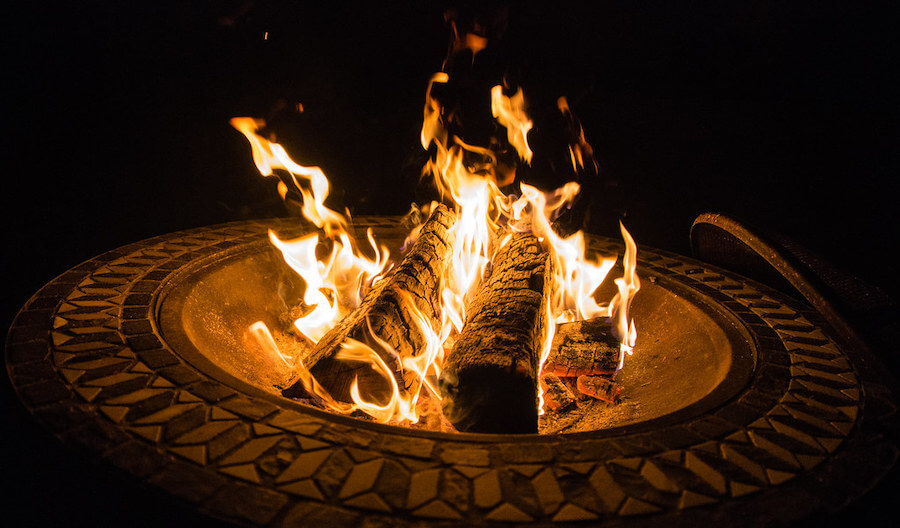It’s time to gather around the fire pit in your backyard and chill out. But here comes a problem, how can you start a fire? What do you use to light a fire pit?
There are four easy ways for this purpose. We will cover them in this post and explain the steps in detail. Let’s check and be ready to burn it up!
Table of Contents
What Do You Use To Light A Fire Pit?
You can light your fire pit using woods, tinder, and kindling. This traditional method is the simplest.
Besides, log lighter, match-lit, electronic ignition, and push-button ignition systems help you with the job. Each approach requires a different list of materials and tools.
Traditional way
The traditional method of lighting a fire pit requires assembling the proper supplies and tools to do it quickly and safely. So, make sure you have the following tools:
- Long-stemmed matches: Most retail stores sell these matches. You can also utilize a regular lighter, but just be aware of the hazards of overheating.
- Tinder: Collect tiny dry debris as you can quickly light them with a match. The debris can be tree bark, pine needles, and shredded newspaper. They should be dry to ignite the kindling.
- Kindling: Kindling can be twigs, dry sticks, or wood pieces employed to construct the base of your fire. You will use it to ignite wood logs.
- Wood logs: Dry, split wood logs work best to light a fire pit. You should have both small and large logs to keep the fire long and robust.
Collect enough wood logs, tinder, and kindling to start and maintain your fire. It’s necessary to have more logs than tinder and kindling as they burn better.
The next step is to build a fire in a fire pit by performing these steps:
- Fill the center of the fire pit with a large pile of tinder.
- Place the tiniest bits of kindling on top of the tinder. Don’t forget to leave space for the flame to breathe and expand from the tinder.
- For a hardwood fire pit, a pyramid-shaped pile of kindling laid over the tinder will work best.
- Light the stack of tinder with a long-stemmed match or a lighter, then wait for the fires to approach your initial pile of small bits of kindling.
- Add big chunks of kindling to your fire when you have a robust, bright blaze.
- Add one or two small hardwood logs once the kindling and tinder have started to ignite.
- Once you have a huge, healthy fire going in the fire pit, keep adding logs to the flames. Remember to place larger logs on top of the smaller ones as you build a fire.
Allow yourself to experiment with various kinds of kindling, tinder, and wood. Also, you are free to use any combination that you think may benefit you.
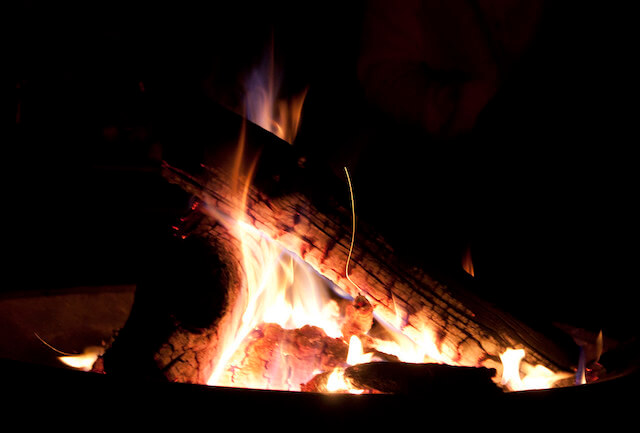
Log lighter system
A log lighting device is one of the best fire pit attachments for convenience. The fuel source for this match-lit system can be LPG or natural gas. You must turn on your gas valve and light a match to burn your firewood logs.
If holding a match or an open flame near your fire pit makes you uncomfortable, light a tiny pack of tinder before turning on the gas valve to start a fire. Thus, your flames will begin to ignite once you open the gas. This method avoids gas line overflows and gas blockages.
Using a log lighting method for a fire pit has significant advantages. But even so, before starting any construction plans, you should check local regulations and talk with a gas professional.
After setting your fire pit and the log lighter kit properly, gather these materials:
- Log grate
- Lighter
- Wood logs
Do you miss anything? If you’re done with preparation, let’s move to the main part and learn how to start a fire with a log lighter system.
- Secure and stack your wood logs above your log lighting setup with a log grate.
- Utilize your valve key to release the line and gradually start the LPG or natural gas flow.
- Light the log lighter with a long, thin, premium grill lighter or a long-stemmed match.
- Set the valve key to the locked state after firing your log lighter equipment to halt the gas flow. Don’t forget to take the valve key from the valve afterward.
- Once you have a constant, intense blaze burning in the fire pit, keep adding hardwood logs to the fire.
- It’s time to chill out by the fire.
A log lighter system’s charm is that it can instantly generate a base of flames. Hence, you don’t need to choose the dried logs to light your fire pit manually.
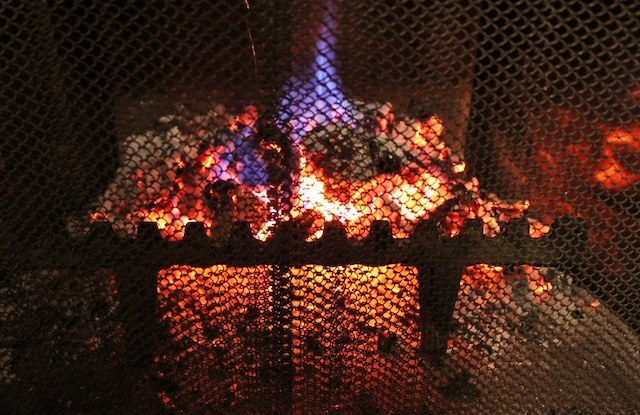
Match-lit system
Lighting a flame in your fire pit is quick and straightforward with a match-lit gas system. You’ll need a long-stemmed match or a long, thin grill lighter and a gas fire feature for this task.
The instructions for lighting your fire pit with a match-lit ignition system are as follows:
- Turn on the gas supply to your fire pit by inserting the valve key.
- Once the burner of your fire pit or fire feature releases flames, light the gas with a long-stemmed match.
- Adjust the flames on the gas fire pit to the desired output and height by increasing or decreasing the gas supply.
Electronic ignition system
The electronic ignition system doesn’t need to use a lighter or a match. Instead, it uses batteries to start a fire in a gas fire pit.
Most electronic ignition systems include built-in technology that detects when your fire is dimming and will relight it for you when it does.
You may light a fire safely from afar using this ignition system if you connect it with a smartphone app, a wall switch, and remote control. Here is the detailed guideline:
- Turn on the system with your remote control or a wall switch. The system will perform a brief safety check before working.
- The pilot flame ignites shortly after the safety check.
- The pilot burns the gas, feeding the central burner.
- Your gas fire pit is ablaze and ready to use within seconds of activating the system. You can turn off your fire pit using your remote control or wall switch.
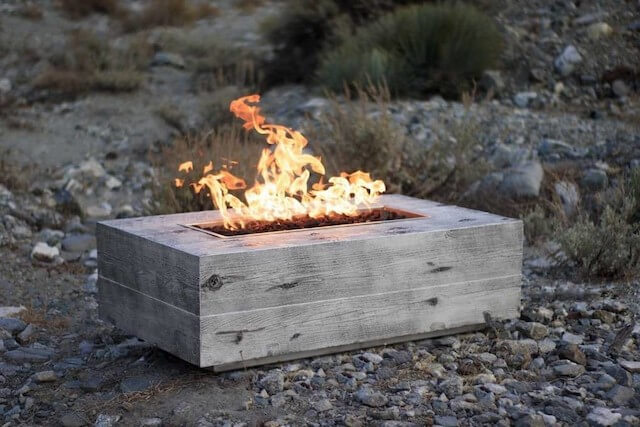
Push-button ignition system
Similar to turning on a gas grill, push-button ignition devices light your fire pit by producing a spark to kindle the gas source.
Using an AA battery, these devices generate the spark required to light your fire pit. Even when there isn’t perfect weather, the battery-operated gear allows quick and simple ignition. Here is how to use it:
- To begin the natural flow of LPG or gas to your fire pit, turn the valve knob.
- Press the ignition system button while you twist the control knob to start the gas flow to the fire pit. It produces the spark required to ignite the pilot.
- Release the control knob and push button once your pilot is on.
- To ignite the main burner and adjust the intensity or height of your fires, rotate the control knob counterclockwise.
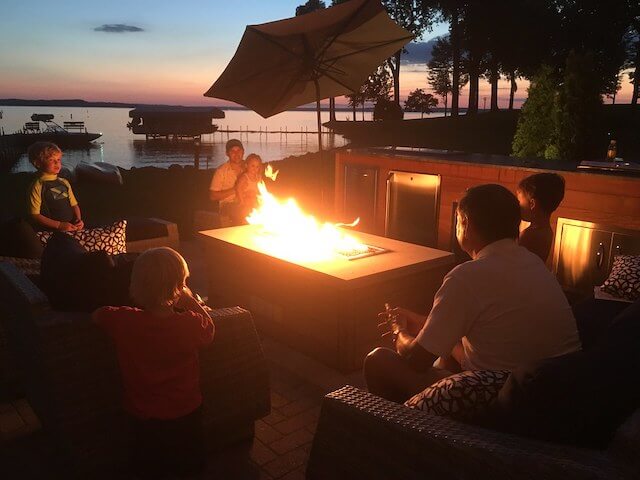
Outdoor Fire Pit Safety
Safety is always the top priority when working with a small or big fire. Learn and follow these fire pit safety precautions before lighting anything to prevent harming yourself, your house, or those nearby.
- Start the fire and get it going at least ten feet away from your house or other combustible materials.
- Before starting, pay special attention to the wind’s direction. Never start a fire when it’s windy outside.
- Keep an eye out for people and animals. Kids should stay at least three feet away from the fire.
- Never start, control, or fuel a fire with gasoline or other hazardous liquids.
- Be ready to stop the fire promptly at any time.
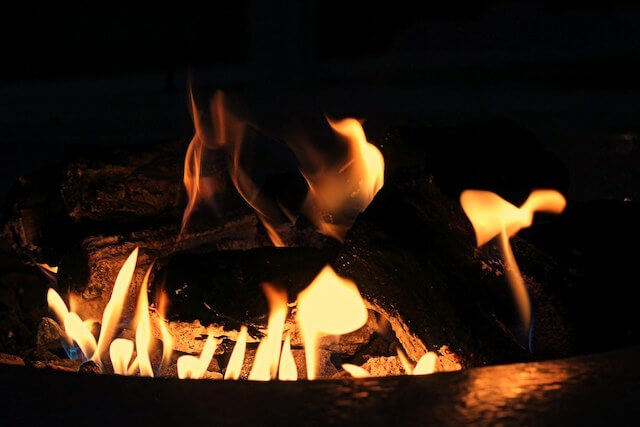
Frequently Asked Questions
1. What do you put in the bottom of a wood-burning fire pit?
The most common material found at the bottom of a fire pit is sand.
2. Do you need sand in a fire pit?
Yes. A metal fire pit with sand at the bottom can help shield the bowl from the searing heat of the flames.
3. What liquid can you use to start a fire?
The most popular liquids for starting a fire are gasoline, paint thinner, and turpentine.
Conclusion
The materials needed to light your fire pit differ depending on your chosen method. No matter what you go for, keep the safety tips in mind to stay safe and chill out.
Please comment in the section below if you have any questions about lighting your fire pit. We will cover it in the next post.
Thank you for reading!

